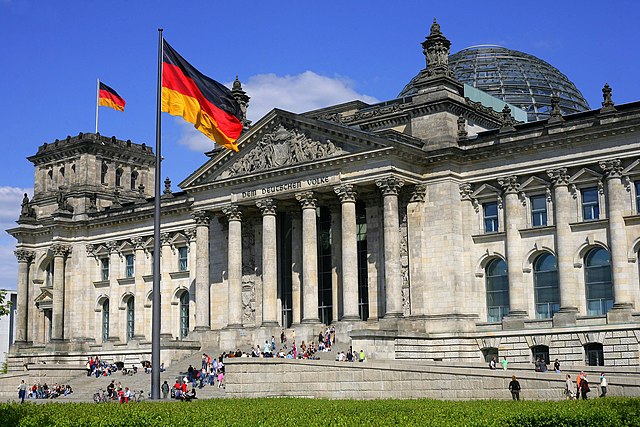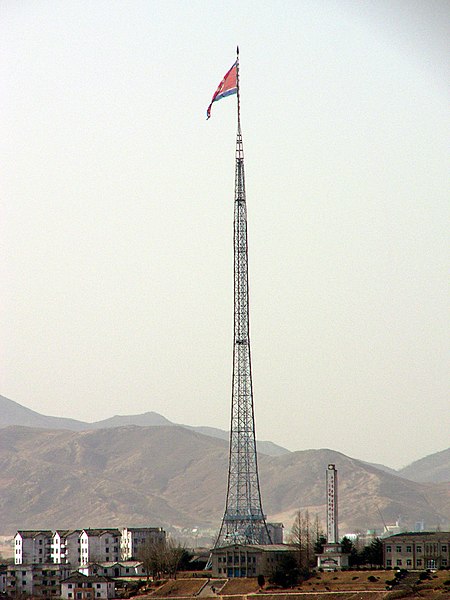The national flag of Germany is a tricolour consisting of three equal horizontal bands displaying the national colours of Germany: black, red, and gold. The flag was first sighted in 1848 in the German Confederation. The flag was also used by the German Empire from 1848 to 1849. It was officially adopted as the national flag of the German Reich from 1919 to 1933, and has been in use since its reintroduction in Federal Republic of Germany in 1949.
The German Unity Flag is a national memorial to German reunification that was raised on 3 October 1990. It flies in front of the Reichstag building in Berlin (seat of the German parliament).
Bundesdienstflagge at the German Embassy, Canberra, Australia
The Stadtweinhaus in Münster with banners displayed in mourning (note the black ribbons atop each staff) after the death of former German president Johannes Rau in 2006
Hambach Festival (May 1832), contemporary lithograph
A national flag is a flag that represents and symbolizes a given nation. It is flown by the government of that nation, but can also be flown by its citizens. A national flag is typically designed with specific meanings for its colours and symbols, which may also be used separately from the flag as a symbol of the nation. The design of a national flag is sometimes altered after the occurrence of important historical events. The burning or destruction of a national flag is a greatly symbolic act.
Johnson's new chart of national emblems, published c. 1868. The large flags shown in the corners are the 37-star flag of the United States (flown 1867–1890), upper left; the Royal Standard of the United Kingdom, upper, right; the Russian Imperial Standard, lower left; and the French tricolore with inset Imperial Eagle, lower right. Various other flags flown by ships are shown. The Flag of Cuba is labelled "Cuban (so called)". The Chinese dragon on the
The first Italian flag brought to Florence by Francesco Saverio Altamura (1859)
A 1919 painting depicting the Brazilian flag being embroidered by a family.
The world's sixth tallest flagpole flying a 270 kg (595 lb) Flag of North Korea. It is 160 m (525 ft) in height, over Kijŏng-dong ("Peace village") near Panmunjom, the border of North Korea and South Korea.








